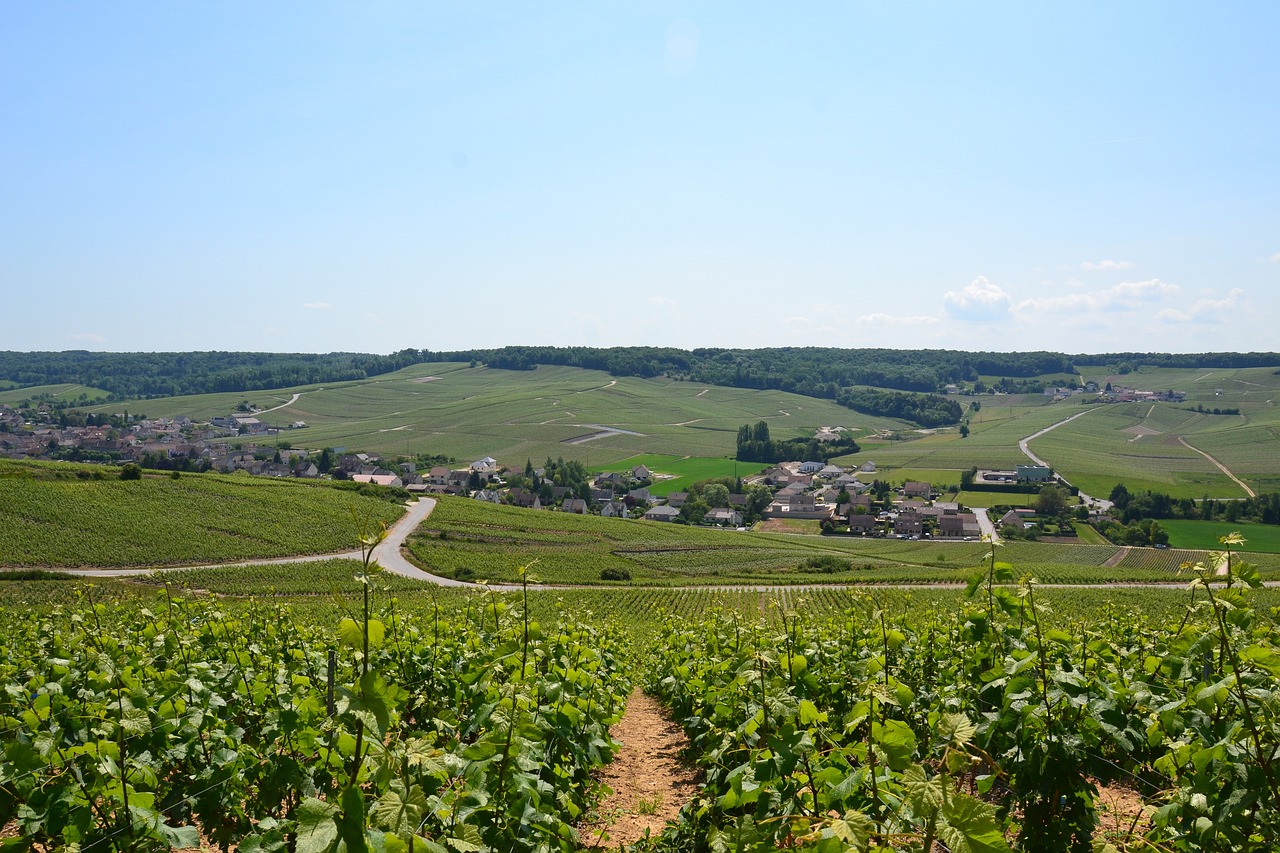? Cépages, or grape varieties, are selected according to climate and terroir. Discover in this article the grape varieties used to produce the famous white or rosé Champagne, as well as the Coteau Champenois red wine.
Champagne grape varieties ?
The predominant grape varieties in Champagne are :
- Pinot noir (37% of planted vineyard)
Perfectly suited to cool, limestone soils, it is the main grape variety of the Montagne de Reims and Côte des Bar regions. Wines made from it offer aromas of red fruit and marked structure. Pinot Noir adds body and power to the blend.
- Chardonnay (30% of planted vineyard)
This is THE grape variety of the Côte des Blancs. Chardonnay wines are characterized by floral, citrus and sometimes mineral notes. Chardonnay is a slow-maturing grape variety, ideal for aging wines.
- Pinot Meunier (32% of planted vineyard)
A vigorous grape variety that adapts well to clay soils, such as those of the Marne Valley, and copes better with more difficult climatic conditions. It produces supple, fruity wines that evolve more rapidly and add roundness to the blend.
Between them, these three grape varieties account for 99% of the total. grape varieties used in champagne.
The remaining 1 % includes the following grape varieties:
- Pinot Gris
- Pinot blanc
- Petit Meslier
- L'Arbanne
? The region produces mostly sparkling white wines.
Blanc de Blancs and Blanc de Noirs
Some white wines also have a label on the bottle: Blanc de blancs or Blanc de Noirs.
So-called Blanc de BlancsChampagne Blanc de Blancs is made exclusively from white grapes. Champagne Blanc de Blancs is a wine made exclusively from Chardonnay (white grapes). Pinot Noir and Pinot Meunier are made from black grapes.
White wines Blanc de NoirsBlack wines, on the other hand, are made from black grape varieties such as pinot noir or pinot Meunier. Black grapes are not only used to make red wine, they are also used to make white wine, because the juice from any bunch of grapes is white. It's leaving the grape skins to macerate that gives the wine its red or pinkish color.
Champagne red wines and grape varieties
There are black grapes in Champagne, making it possible to make red wine. However, the region specializes in sparkling whites, so it's rare to find a still red wine. Nevertheless, the Coteaux-Champenoisanother appellation in the region, produces white, rosé and red wines. A major Champagne house is also known for its Coteaux Champanois cuvée: the Maison Bollinger and its Côte aux Enfants. Unlike the other two appellations : Ratafia Champenois (white muté wine) and Rosé des Riceys which, as its name suggests, produces rosé. Only a handful of small villages resist the sparkling white wine craze and continue to produce still red wine, such as Bouzy, made from pinot noir grapes.
How to enjoy champagne
Tasting champagne is a pleasurable sensory experience, and there are a few key steps to enjoying it to the full. Here's a simple guide to help you enjoy your champagne:
- ?️ Temperature: Make sure your champagne is cool enough, but not too cold. The ideal serving temperature for most champagnes is between 8 and 10 degrees Celsius. This will help preserve aromas and maintain a pleasant effervescence.
- ☁️ Open the bottle: Hold the bottle at a 45-degree angle while holding the cork firmly, and slowly rotate the bottle. You should hear a slight hiss as you open the bottle. Be sure to point the cork away from people and fragile objects.
- ? The visual: Pour a small amount of champagne into a flute, holding the glass by the stem so as not to warm the liquid with the heat of your hands. Observe the color of the champagne. Younger champagnes tend to be paler, while older champagnes may have a more golden color.
- ? Effervescence: Notice the bubbles rising from the bottom of the glass. Quality champagnes should have a constant, fine effervescence. The finer and more persistent the bubbles, the higher the quality of the champagne.
- ? The nose: Gently swirl your glass to release the aromas. Bring the glass up to your nose and take a deep breath. You'll then be able to perceive the fruity, floral, toasted or yeasty aromas that characterize champagne.
- ? Mouth: Take a sip of champagne and let it flow into your mouth to fully appreciate the flavors. Try to detect the different notes, such as fruit, spice or nuts. Also observe the balance between acidity, sweetness and bitterness.
- ? The finish: After swallowing or spitting, notice the lingering aromas on the palate. A quality champagne will leave a pleasant sensation of freshness and length on the palate.
Our Champagne Partner Domains











![✨ Comptoir des Millésimes honors Champagne's great winemakers ✨[LINK TO THE ORGANIC CELLAR]We've selected 11 exceptional estates that reveal the full richness of Champagne terroir through unique, refined cuvées. Hugues Godmé - In Verzenay, this family-run biodynamic estate offers precise, vibrant champagnes with a beautiful mineral tension.Egly-Ouriet - A benchmark for the Montagne de Reims, its powerful champagnes, aged for long periods in barrel, impress with their complexity.Moussé Fils - In Cuisles, the Meunier grape is king. Pertois-Moriset - Pure, taut Chardonnay Grands Crus for lovers of chalky finesse. A fine address in Mesnil-sur-Oger.Geoffroy - In Aÿ, this domaine produces fine champagnes, carefully crafted and barrel-aged to reveal the full complexity of the terroir.Larmandier-Bernier - Biodynamic viticulture, exceptional parcels and purity. Crystal-clear, intense champagnes for connoisseurs.Roger Coulon - Eight generations of expertise at Vrigny. Balanced, subtle and elegant champagnes.A. Bergère - In Avize, a dynamic house offering expressive, fruity and accessible cuvées.Adrien Renoir - A promising talent from Verzy, he produces fine, complex champagnes with a true sense of terroir.De Sousa - Emblematic house in Avize. Richness, depth, long ageing: Chardonnay at its peak.Pierre Paillard - In Bouzy, the family magnifies Pinot Noir with vinous, racy and sincere cuvées.📦 Order now on our website#ComptoirdesMillésimes #Champagne #VigneronsIndépendants #GrandVin #ChampagnesdeTerroir #LivraisonRapide](https://www.comptoirdesmillesimes.com/blog/wp-content/plugins/instagram-feed/img/placeholder.png)